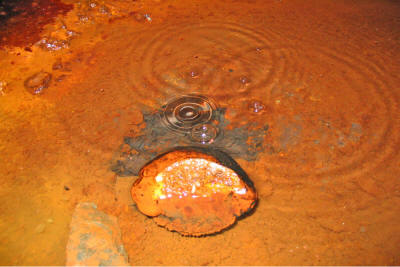|
from Nature Website
Search is on for signs of
microbial activity isolated in
Earth's crust.
has been trapped underground for more than a billion years.
It bubbles with
gasses carrying nutrients that could sustain microbial life.
The researchers say they do not yet know
whether anything has been living in it all this time, but the water
contains high levels of methane and hydrogen - the right stuff to
support life.
But no source of free-flowing water passing through interconnected cracks or pores in Earth’s crust has previously been shown to have stayed isolated for more than tens of millions of years.
He and his team carefully captured water flowing through fractures in the 2.7-billion-year-old sulphide deposits in a copper and zinc mine near Timmins, Ontario, ensuring that the water did not come into contact with mine air.
The authors determined that the fluid could not have contacted Earth's atmosphere - and so been at the planet's surface - for at least 1 billion years, and possibly for as long as 2.64 billion years, not long after the rocks it flows through formed.
The study appears today in Nature.1
'Extremely strange'
The findings are “doubly interesting”, Chris Ballentine says, because the fluid carries the ingredients necessary to support life.
The isolated water supply, he says,
provides “secluded
biomes, ecosystems, in which life, you can speculate,
might have even originated”. His colleagues are now working to
establish whether the water does harbor life.
The surface of Mars once held water and its rocks are chemically no different from those on Earth, he says.
|

